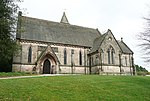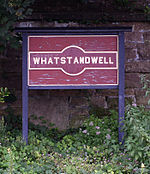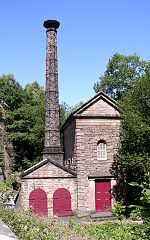Alderwasley Hall School
1930 establishments in England1976 establishments in EnglandAll accuracy disputesAutism-related organisations in the United KingdomCountry houses in Derbyshire ... and 6 more
Educational institutions established in 1930Educational institutions established in 1976Private schools in DerbyshireSchools for people on the autistic spectrumSpecial schools in DerbyshireUse British English from February 2023

Alderwasley Hall School is a private residential special school. The school is for children and young people aged 5 to 20 with High-Functioning ASD (Autism Spectrum Disorder), Asperger's Syndrome, Pathological Demand Avoidance (PDA), and Developmental Language Disorder. It is in and named after the village of Alderwasley in the Peak District, close to Wirksworth in Derbyshire, England.
Excerpt from the Wikipedia article Alderwasley Hall School (License: CC BY-SA 3.0, Authors, Images).Alderwasley Hall School
Higg Lane, Amber Valley
Geographical coordinates (GPS) Address Phone number Website External links Nearby Places Show on map
Geographical coordinates (GPS)
| Latitude | Longitude |
|---|---|
| N 53.076 ° | E -1.514 ° |
Address
Alderwasley Hall School
Higg Lane
DE56 2SR Amber Valley
England, United Kingdom
Open on Google Maps









